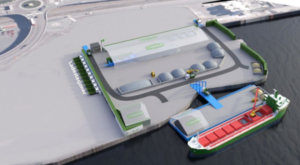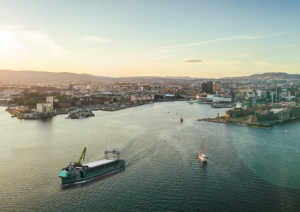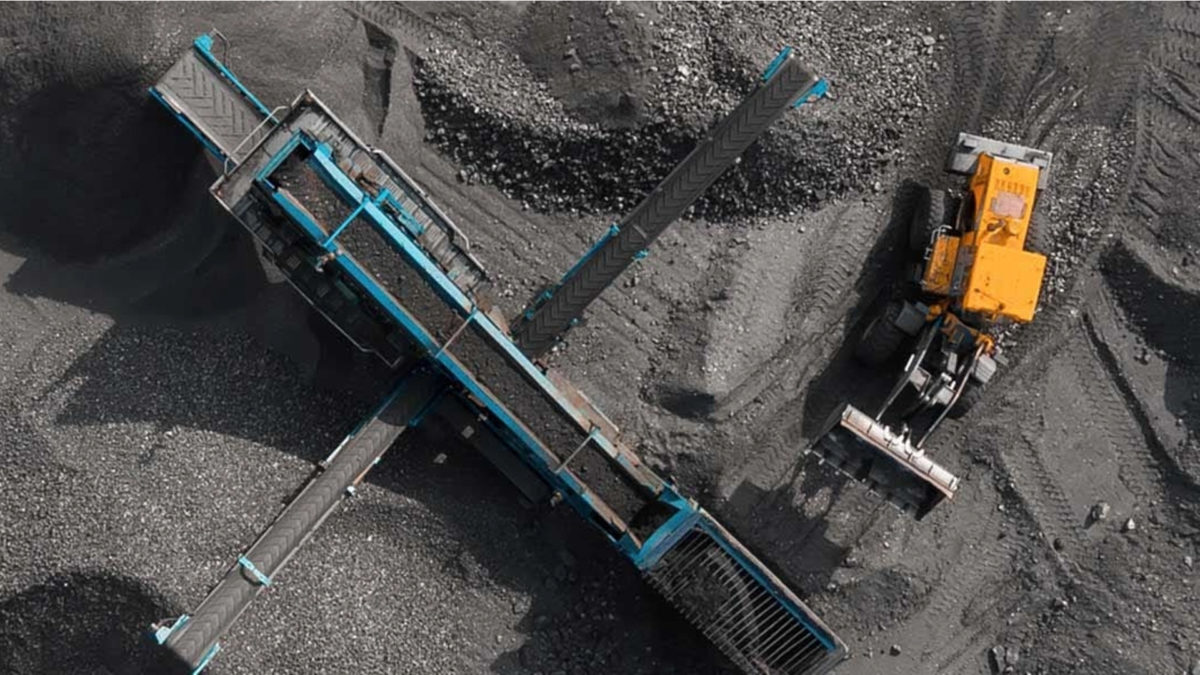The public sector accounts for approximately 40% of the turnover in the construction and civil engineering sector, thereby exerting significant influence over the procurements in this industry.
A substantial part of these procurements is associated with the transportation of building materials, aggregates, and products such as cement and asphalt. Furthermore, surplus materials from projects represent a tremendous need for transportation.
Through major construction projects and infrastructure development, the public sector manages a significant portion of the bulk transport in the Norwegian construction and civil engineering sector and is, therefore, a major direct and indirect purchaser of transportation services.
The “Roadmap for Green Maritime Transport in the Construction and Civil Engineering Sector” indicates that increased use of maritime transport can lead to a significant reduction in greenhouse gas emissions and other negative environmental impacts associated with transport for the construction and civil engineering sector.
Experience has shown that there are challenges in designing award criteria and requirements for climate/environment so that procurement requirements are upheld throughout the supply chains and in the contractual layers of chosen transport solutions.
Goals and content of the pilot
The objective of the pilot is to ensure that environmental criteria and requirements are emphasized in major public projects as much as possible.
It also aims for the use of maritime and land transport alone, or combined with recycling solutions, wherever feasible, and further, that the criteria and requirements are consistent at all contract levels from the main contractor to subcontractors.
The pilot’s efforts will be based on real-life example projects with the aim of developing concrete proposals for contract strategies/formulations that can contribute to realizing potential climate and environmental benefits arising from the use of (green) maritime transport and environmental terminals for transshipment and reuse of masses.
The study will, among other things, closely examine the current process in terms of award criteria, and not least, the challenges and barriers to better management of masses regarding energy use and emissions of greenhouse gases. Furthermore, the pilot will:
- Estimate the effect of using green maritime transport, also as part of a transport system based on both sea and road.
- Assess the extent to which green maritime transport can also trigger a faster introduction of electric trucks in the same transport chain.
- Focus on how environmental terminals for transshipment and recycling solutions of surplus materials can be combined with the introduction of green maritime transport and electric trucks.
Status
The pilot study and its participants commenced their work in January 2024.

VIMAS Skanska’s sketch for a future terminal in Oslo Harbor

Multimodal transport with the goal of achieving the best possible total emission reduction. Illustration: Naval Dynamics.

Electric truck. Photo: Grønt Landskapsprogram.
April 2024
Work package 1 (Mapping of the current situation) has been completed and work package 2 (Allocation criteria (Environmental criteria)) will soon start up.
During the partner meeting held in March 2024, it was established that Skanska has no intentions of becoming a shipowner. But there is a need for new technology, and GPS’s program is attracting attention. In the context of construction sites that dust and make noise, GSP gives politicians the opportunity to talk about this topic in a different and more positive way.
October 2024
The work in the pilot has revealed that approximately 12-15 million tons are transported annually in and out of the Oslo region. It has also been found that there has been a large supply of surplus materials, with a greater extraction than consumption. 80% of these materials are clean and could have been reused.
Today, however, the materials mainly go to disposal without reuse. 60% of these materials are transported far out, west of Oslo. Only 3-4% are transported by sea.
To make the material flows circular with a high degree of reuse, land transport and sea transport must be combined with recycling terminals at Oslo Port and at extraction sites.
The pilot emphasizes that the main barriers are regulatory requirements and obtaining permits to operate recycling terminals.

